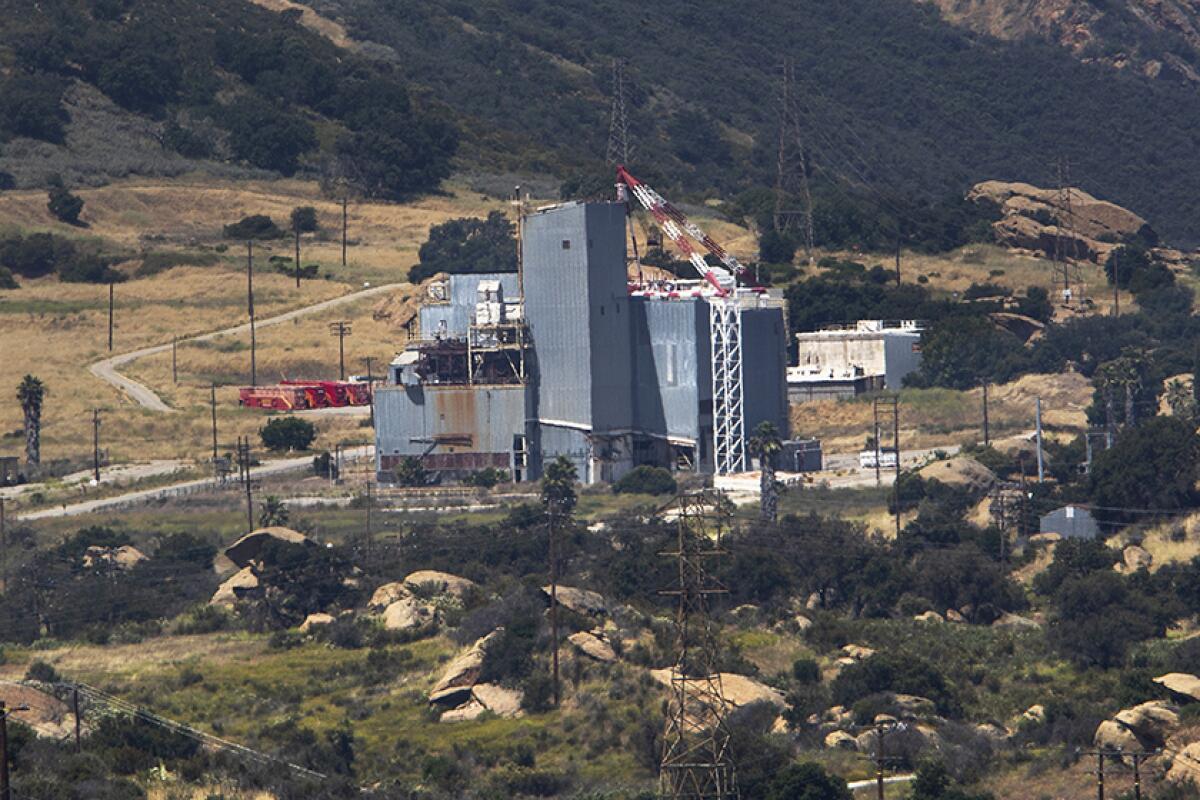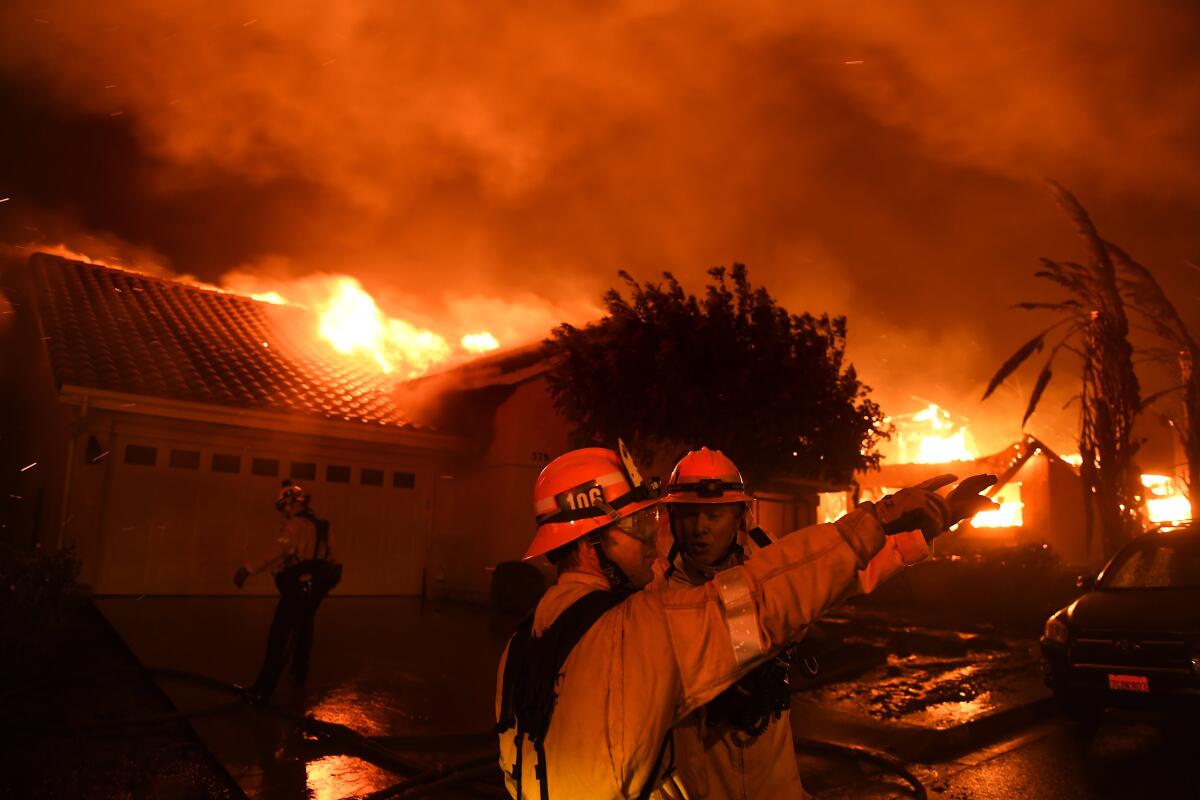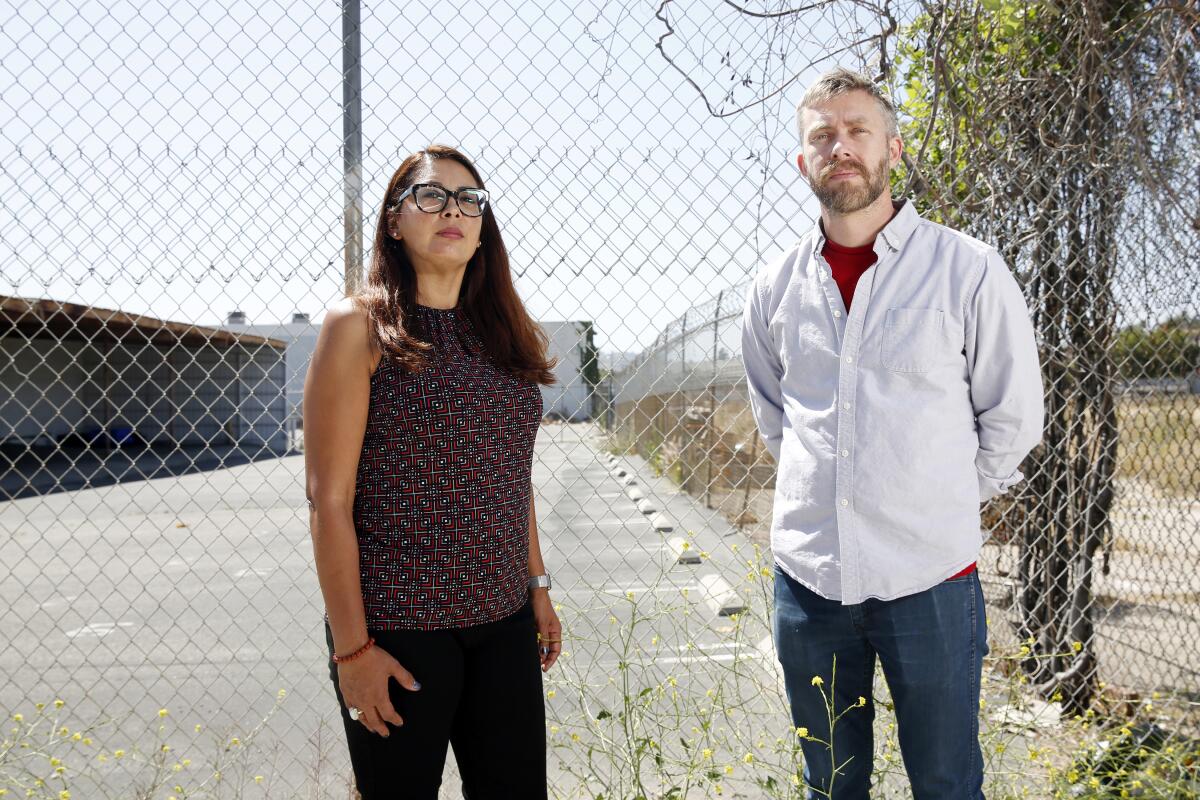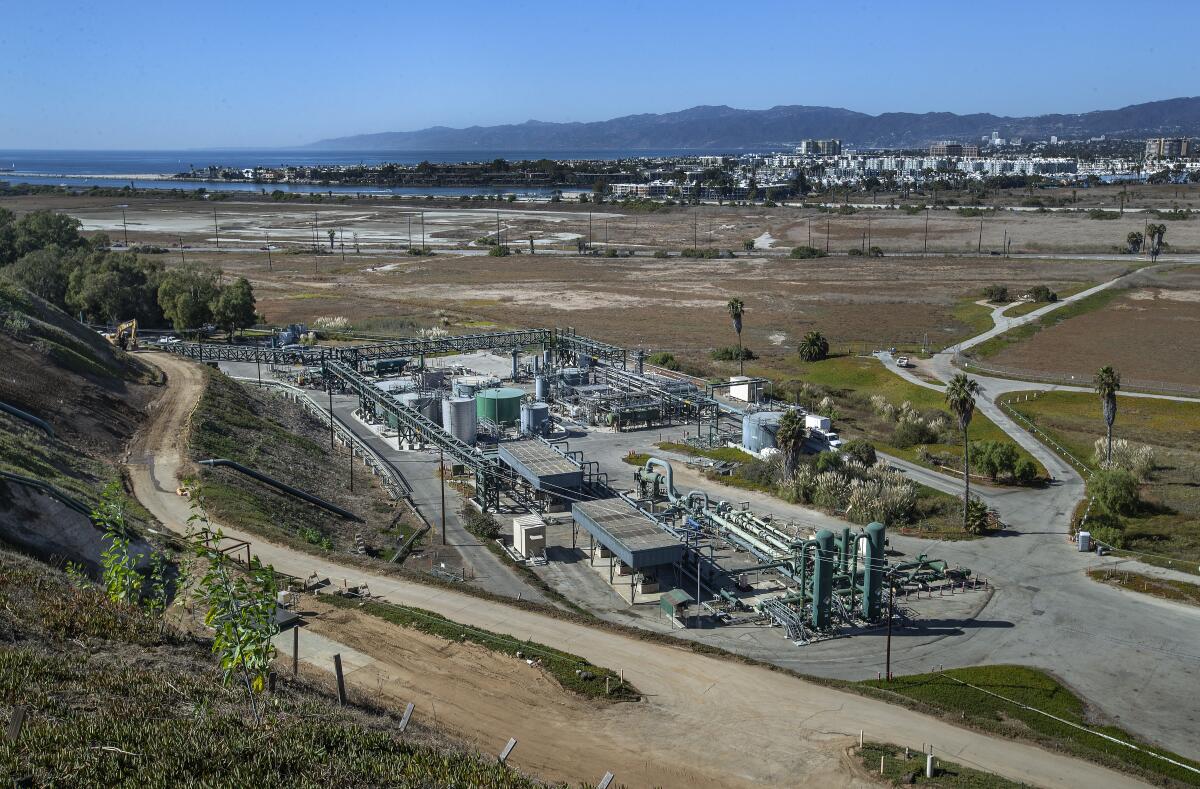Newsletter: The dark legacy of a nuclear meltdown, and what it means for climate change
This is the May 20, 2021, edition of Boiling Point, a weekly newsletter about climate change and the environment in California and the American West. Sign up here to get it in your inbox.
There are few topics on the energy beat that get people more riled up than nuclear power. Even making a passing reference to nuclear on Twitter, I’ve found, can lead to dozens of passionate and/or angry replies about how the technology is the only way to address global warming, and anyone who says otherwise is an ignorant climate denier — or how it’s an unparalleled scourge on humanity and the planet, and it needs to be eliminated as quickly as possible (and anyone who says otherwise is foolish).
Not every story has two equally valid sides, and the right answer isn’t always the midpoint between extremes. Still, I tried to be cognizant of the deep disagreements in my latest piece. It’s about the looming closure of California’s last nuclear power plant.
Diablo Canyon is the state’s largest electricity generator, and for better or worse officials have decided to demolish it. That’s unlikely to change, despite the urgent pleas of nuclear advocates. The key questions now are: How will California replace all that climate-friendly power? Will emissions rise after the nuke shuts down? What are the lessons for the rest of the country?
I hope you’ll read the story and let me know what you think. The issue is highly relevant to President Biden’s goal of 100% clean energy nationally by 2035, and to questions of environmental justice, energy costs and keeping the lights on.
As I was reporting on Diablo Canyon, a related story caught my attention: The Santa Susana Field Laboratory.
Despite growing up in Los Angeles, until recently I knew next to nothing about Santa Susana, which is nestled in the Simi Hills west of the San Fernando Valley. As my L.A. Times colleagues have chronicled, it was a nuclear reactor and rocket engine test facility for decades, and the site of a partial nuclear meltdown in 1959. Today more than 700,000 people live within 10 miles.

Santa Susana is an incredibly toxic site. And the parties responsible for the long legacy of radioactive waste and other contaminants — namely Boeing, NASA and the federal Department of Energy — have done hardly anything to clean it up.
“That work was supposed to be completed by 2017. Yet much of it has not even started,” columnist Michael Hiltzik wrote last year.
Santa Susana is also the subject of a new documentary, “In the Dark of the Valley,” which is making the rounds on the film festival circuit. It’s a gut-wrenching story about children living near the field lab who have been diagnosed with cancer, and whose mothers have banded together to demand a full cleanup, in hopes that other families won’t suffer like theirs have.
The film focuses on Melissa Bumstead, whose daughter Grace Ellen was diagnosed with a rare and aggressive form of leukemia at age 4. Bumstead started a Change.org petition that has garnered more than 700,000 signatures, calling on politicians including Gov. Gavin Newsom to compel Boeing and the federal agencies to live up to their long-unfulfilled promises.
“I’m not going to stop. So we’ll just have to find out who has more endurance, me or them,” she says in the film’s closing moments. “The thing that’s heartbreaking is that it’s just going to continue. But it’s the kids who have to suffer, and it’s the parents who have to bury them.”
I should caution that it’s challenging to conclusively link individual cancer cases to specific causes. And cancer is so common in the modern world that even seemingly obvious clusters can sometimes be a cruel trick of statistical fate.
Still, there’s been research suggesting that Santa Susana may pose a serious health risk to people nearby.
In 1997, UCLA scientists reported that field lab workers exposed to higher doses of radiation from 1950 through 1993 were more likely to die of cancer. A decade later, University of Michigan researchers found that people living within two miles of the site had been diagnosed with thyroid, bladder and other cancers at a 60% higher rate than people living more than five miles away.
The scope of the contamination far exceeds a single meltdown more than 60 years ago.
Daniel Hirsch — a retired UCLA and UC Santa Cruz lecturer whose students originally uncovered the meltdown, which was hidden from public view for two decades — says there were several accidents at the field lab, worsened by a lack of containment domes for the nuclear reactors. There were shockingly unsafe waste disposal practices too. For years, workers used rifles to shoot barrels of toxic chemicals to make them ignite or explode. Radioactive waste was also routinely burned in open-air pits, Hirsch said.
“This was completely illegal. They weren’t supposed to be doing it,” he said.
Hirsch runs the anti-nuclear group Committee to Bridge the Gap, and he’s been trying to get Santa Susana cleaned up for more than 40 years. His concerns include the continued presence of cancer-causing chemicals that can seep into groundwater, or be flushed down into the San Fernando and Simi valleys during rainstorms — or become airborne during a wind-driven wildfire.
That was a major worry during the 2018 Woolsey fire, which was ignited by a Southern California Edison electrical line at the field lab. State officials said the wildfire smoke wasn’t any more dangerous to breathe than usual, but Hirsch had a hard time believing that.
“They set up the air monitor two days after the fire,” he said.

I asked Boeing, NASA and the Department of Energy if they wanted to comment on the documentary, particularly on the mothers who believe their children got cancer as a result of living near Santa Susana.
Boeing spokesperson Bryan Watt said via email that the company is committed to cleaning up the site, and that health concerns “have been the subject of extensive studies by university researchers, state and federal agencies, and the California Cancer Registry over the years.” Those studies, he said, “have overwhelmingly failed to show that [Santa Susana] has had any measurable effect on off-site cancer rates or that the surrounding communities are being exposed to hazardous levels of contaminants.”
Similarly, NASA spokesperson Shannon Segovia said “the best scientific evidence we have gathered” shows the worst pollution is limited to groundwater and soil within the field lab boundaries. She pointed to the California Department of Toxic Substances Control’s website, which states that “contamination at levels that pose a risk to human health are not traveling off-site.”
“NASA’s top priority is the protection of public health and the environment,” she wrote.
A Department of Energy spokesperson told me the agency is “committed to transparency” and has begun demolishing 10 former radioactive materials buildings “in a manner protective of the public, the environment, and the surrounding communities.”
Despite those pledges, Hirsch and many local residents say Boeing and the federal government have repeatedly tried to weasel out of their commitments. And the Department of Toxic Substances Control hasn’t put up much of a fight, critics say. In January, for instance, the agency agreed to confidential talks with Boeing to resolve a dispute over the extent of the cleanup.
Another wrinkle is NASA’s recent decision to nominate the entire field lab for inclusion in the National Register of Historic Places, citing its Native American cave drawings and archaeological relics. Critics fear the historic designation is a thinly veiled attempt by NASA to shirk some of its cleanup obligations, a charge the space agency denies, as my colleague Louis Sahagún reported.
The ongoing contamination at Santa Susana, and the voices of the mothers fighting for their children’s safety, are a reminder that nuclear energy carries great risks. Maybe new technology will make nukes safer, and the federal government will finally build a permanent repository to store nuclear waste, and there will be no more meltdowns. But maybe not.
Are the risks outweighed by the benefits? For me personally, it’s hard to know how to feel. I’ve lived my entire life under the dark cloud of climate change, so from that perspective, continuing to run existing nuclear plants seems inherently reasonable.
At the same time, I was definitely jarred by Hirsch’s response when I told him I had hiked in the Simi Hills, within a few miles of the Santa Susana Field Lab, and asked whether he would feel safe doing the same. He didn’t hedge. He told me he would not.
“Every area around the site has been found to have contamination,” he said.
On that note, here’s what else is happening around the West:
TOP STORIES
It’s only May, and Los Angeles is already burning. A fast-moving blaze that prompted evacuation orders for about 1,000 people in Topanga Canyon is a sign of how dry the landscape has become, my colleague Alex Wigglesworth reports. Federal officials are already warning that California and the West should prepare for another bad fire season, per The Times’ Anna M. Phillips. Anna also writes that the U.S. Forest Service is having trouble recruiting some of the most crucial front-line firefighters, known as hotshots. With starting salaries of $13.45 per hour and increasingly year-round wildfire seasons, it’s not hard to see why.
Gov. Gavin Newsom’s updated budget proposal includes $2 billion for wildfire preparedness, and a bunch of money for clean cars and the electric grid. Our Sacramento bureau chief, John Myers, has the details. The proposal would also set aside up to $1 billion to help L.A. County build new transit lines in time for the 2028 Olympic Games, The Times’ David Zahniser and Laura J. Nelson report. Another budget line item would fund a study of solar panels over aqueducts, an idea I wrote about last month.
The oil industry spent $4.3 million lobbying Sacramento during the first three months of 2021. Capital & Main’s Aaron Cantu has a roundup of the bills the industry is trying to kill, including legislation that would increase transparency around spills, expand reporting requirements for climate emissions and set sales targets for electric cars. This comes as the International Energy Agency — which is far from an environmental group — suggests governments ought to stop approving new oil and gas fields and aim to end the sale of gasoline-fueled passenger vehicles by 2035. More details here from Brad Plumer at the New York Times.
ENVIRONMENTAL JUSTICE

“How can you tell us that the land is safe without you testing the soil?” My colleague Emily Alpert Reyes wrote about lingering pollution in the majority-Latino neighborhood of Lincoln Heights, and whether a housing development should be built on a potentially contaminated site near a Metro station. There are also gentrification questions. In other transit-related news, Joe Linton reports for Streetsblog L.A. that City Council Member Kevin de León is asking to delay a dedicated bus lane in Eagle Rock.
Colorado’s only major oil refinery keeps spewing illegal levels of cancer-causing pollution into a low-income Latino neighborhood. The pollution has continued even as the facility’s owner, Suncor, issues statements supporting Black Lives Matter and committing to confronting racial injustice, Geoff Dembicki reports for Vice News. Also in Colorado, the Denver Post’s Alex Burness writes about the state’s nascent efforts to help the coal town of Paonia survive economically as the coal industry winds down.
On the border of New Mexico and Texas, yet another predominantly Latino town is fighting plans for a new gas-fired turbine at a power plant owned by El Paso Electric. Here’s the view from the ground in Chaparral, where residents say some of country’s dirtiest air is making them sick, as Claudia Silva writes for New Mexico In Depth. El Paso Electric says the new gas unit is needed to help keep the lights on during hot summer weather. Indeed, power grid officials are warning that not just California but also Texas, New England and parts of the Midwest are at risk of energy shortages this summer, per Utility Dive’s Robert Walton.
WATER AND THE LAND
To see how drought is tightening its grip on the West, look to San Francisco, which is suing state officials over water limitations designed to protect salmon in the Tuolumne River. Here’s the story from John Holland at the Modesto Bee. At times like these, I like to look for signs of hope. So I enjoyed this story by Greta Moran for Civil Eats about Western ranchers nourishing native grasses and protecting them from overgrazing, so that the soil retains more water (and also more carbon).
The federal government is paying people $1,000 to give “good homes” to wild horses — and in some cases those horses are immediately being sold for slaughter. That’s the key finding of this shocking story by the New York Times’ Dave Philipps about a Bureau of Land Management program meant to limit the number of mustangs on public lands and in governmental corrals.
The maker of Roundup will have to pay $25 million to a man who believes the weed killer caused his cancer, a federal appeals court ruled. There are thousands of similar lawsuits pending against Monsanto, The Times’ Maura Dolan reports.
Toward a more sustainable California
Get Boiling Point, our newsletter exploring climate change, energy and the environment, and become part of the conversation — and the solution.
You may occasionally receive promotional content from the Los Angeles Times.
THE ENERGY TRANSITION
Ford is rolling out an electric version of its F-150 pickup truck, America’s bestselling vehicle, and President Biden is stoked. The president was at a Ford plant in Michigan this week, where he declared that “the future of the auto industry is electric” and called for big investments in charging infrastructure, as Riley Beggin and Jordyn Grzelewski report for the Detroit News. West Coast states have been leading the charge on electric vehicles in terms of public policy — but in a surprise move, Washington Gov. Jay Inslee just vetoed a bill that would have banned the sale of gasoline cars by 2030. Electrek’s Jameson Dow explains why.
Google struck a deal with startup Fervo Energy for an advanced geothermal power plant to supply electricity to its data centers in Nevada. Here’s the story from Canary Media’s Julian Spector. The agreement is a big deal for the geothermal industry, which, as I’ve written previously, could play a huge role in the clean energy transition. Also in Nevada, lawmakers are taking a more proactive approach to transmission than their counterparts in California. They’re pushing legislation to prompt construction of new power lines in hopes of becoming a “regional hub” for the West, as Riley Snyder reports for the Nevada Independent.
I continue to be flummoxed by the idea of cryptocurrency, and all things blockchain-related. But I did understand what Elon Musk was talking about when he said bitcoin consumes way too much energy. As my colleague Michael Hiltzik points out, about two-thirds of all bitcoin “mining” takes place in China, where the electricity supply is 58% coal, 20% oil and 8% natural gas. In other Musk-related news, The Times’ Russ Mitchell reports that Tesla is “under review” by the California Department of Motor Vehicles for advertising “full self-driving capability” for cars that are not actually capable of fully driving themselves safely.
ONE MORE THING

You may remember my story from last month on the Playa del Rey gas storage field on L.A.’s Westside. The facility has a long history of leaks, and local residents fear the possibility of a blowout similar to the one several years ago at Aliso Canyon.
I’m now told by Santa Monica City Council Member Kevin McKeown that the city is joining Los Angeles officials in calling for Gov. Gavin Newsom to shut down the Playa del Rey facility, which, like Aliso Canyon, is owned by Southern California Gas Co.
“Santa Monica divested from fossil fuel stocks eight years ago, and for over two years has operated on 100% renewable electricity. It’s time for outmoded and dangerous fossil fuel infrastructure to be retired and removed,” McKeown told me via email.
Also this week, the Los Angeles City Council voted overwhelmingly to urge Newsom to close Aliso Canyon. More details here from Olga Grigoryants at the L.A. Daily News. SoCalGas says both storage fields are safe, and vital for meeting local energy needs.
We’ll be back in your inbox next week. If you enjoyed this newsletter, please consider forwarding it to your friends and colleagues.




